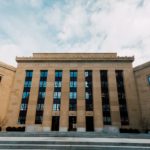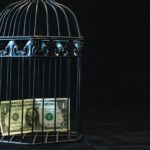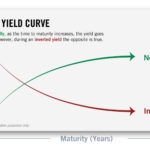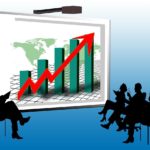This article, written by Rich Vesel – Founder of Advanced Projections, was originally written for and published by Advisor Perspectives, linked here.
Ever since the first quarter showed a decline in real GDP, the word “recession” has been increasingly prevalent in our conversations. The classic definition of recession, or at least one of the most widely accepted definitions, is two consecutive quarters of GDP decline. When the real GDP declined again in the second quarter, albeit slightly, that classical definition was met.
Why hasn’t it been made official or even generally acknowledged?
There are two good reasons for the lingering ambivalence on the topic, along with continuing uncertainty about what the economy does in the next few quarters.
The GDP declines in the first half of this year have been modest, and they have also been masked by full employment and inflation, neither of which have retreated…yet. The heated economy is running at almost full tilt, but underneath is a treadmill belt that is running just a bit faster. From the frame of reference of the runner (us, inside the economy), we are cranking hard. From outside the frame of reference, the absolutes of economic analysis, there’s a slight yet observable retrograde motion. But it isn’t pronounced enough yet to make a firm recessionary declaration, especially when the very announcement itself, right or wrong, may create the self-fulfilling prophecy that everyone dreads.
Few in government or finance will jump out and say anything negative about the topic. You have heard a lot of statements from those quarters along the lines of, “I don’t believe the economy is in recession,” or, “It is not in recession,” or, “It doesn’t currently appear to be in recession,” or, “the probability of a recession is only 38%”
When will we know, or at least when does it become official?
Those are two separate questions. The answer to the second question is easy: A recession becomes “official” to the government and the Federal Reserve, and to the financial community at large, when the National Bureau of Economic Research (NBER) declares it so. Nothing else matters, and if its declaration never comes, whatever doldrums we experience will be labeled as something else – economic stagnation, stagflation, a period of slow growth, etc.
The NBER’s own description of what constitutes a recession is nebulous, and devoid of any helpful quantifications. Instead, in its own words, here is what they define as a recession:
The NBER’s traditional definition of a recession is that it is a significant decline in economic activity that is spread across the economy and that lasts more than a few months. The committee’s view is that while each of the three criteria – depth, diffusion, and duration – needs to be met individually to some degree, extreme conditions revealed by one criterion may partially offset weaker indications from another.
The problem with waiting for a declaration from the NBER is exactly that – the wait. Using the classic definition, from the “starting line” of a downturn to the point at which it meets the minimum definition of a recession, it’s at least six months. If it is a slowly developing downturn, it will take nine or 12 months, maybe longer. Then, we must wait for the 1400+ economists at the NBER to come to their own consensus regarding the actual beginning of the recession and issue their proclamation recognizing that the beast is indeed a recession. Their internal process doesn’t happen overnight – it takes many more months of processing and debating inside the NBER before they are convinced sufficiently to take a stand. After all, it is the final arbiter on this topic.
Meanwhile, if we take the six-month minimum as a starting point, another quarter to confirm, and another quarter for the NBER to analyze, debate, and finally commit to a declaration, then we are likely to have been dealing with a recession for at least a year before it is declared, retroactively. By then, the likely downturns in leading economic indicators (LEIs), business activity, profits, equity prices, and employment will be evident. Reacting to these only at the time a recession becomes official is akin to committing the proverbial crime of “closing the barn door after the cows have escaped.”
Do we continue to debate if it is a duck (recession)? If it looks, walks, swims, and quacks like a duck, then it is a duck. Practically speaking, we will know, and won’t need to wait for a biologist to come along after doing an exhaustive DNA test on it to confirm that, yes, it is a duck. We can treat it as if it were a duck and make our menu plans based on the assumption that it’s very likely to be a duck.
The same goes for a recession.
The “looks like,” “walks like,” “swims like,” and “quacks like” aspects of a recession can be found in data that either leads, or is concurrent with, the start of a recession. The probability of it being a duck increases with each bit of contributing evidence, even though no single one of those bits provides you with a reasonable assurance that it is a duck. But taking in all the evidence, there is a high probability that it is a duck.
If you had a 90%+ certainty that you are now observing a duck in action, what would you do with that information?
See More from Advisor Perspectives:
https://www.advisorperspectives.com/articles/2022/07/16/why-inflation-will-not-go-quietly-into-the-night
https://twitter.com/AdvPerspectives
https://www.linkedin.com/company/advisor-perspectives






